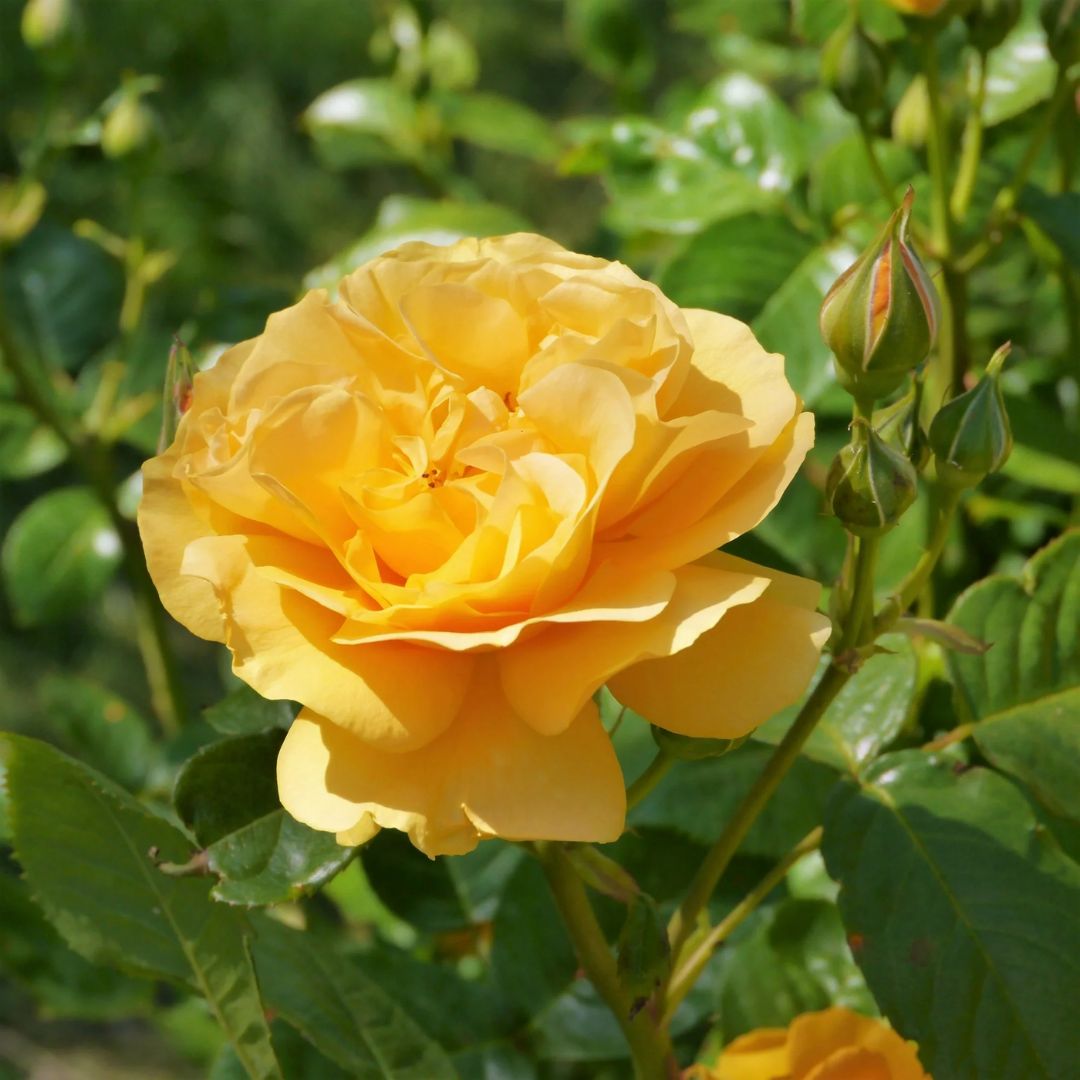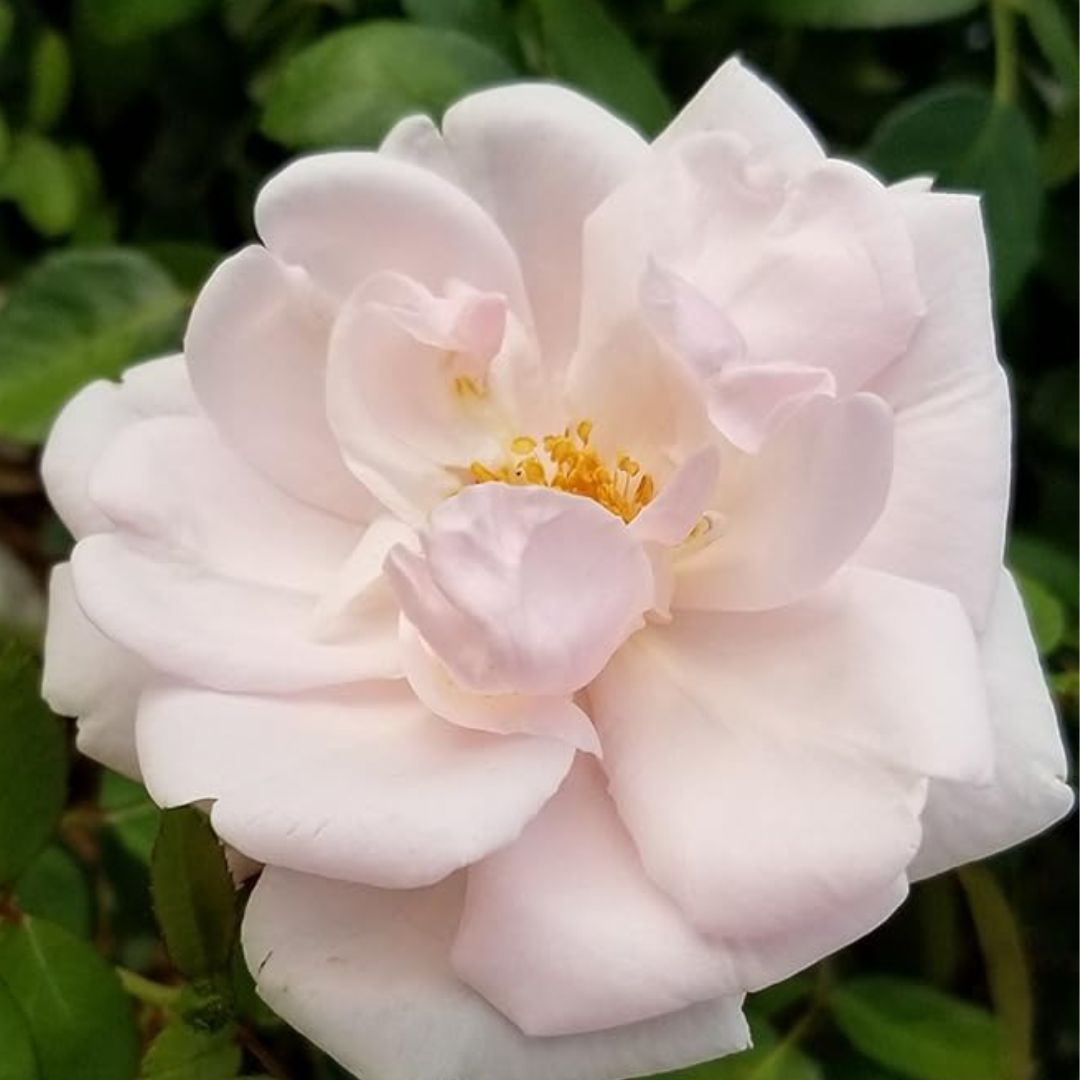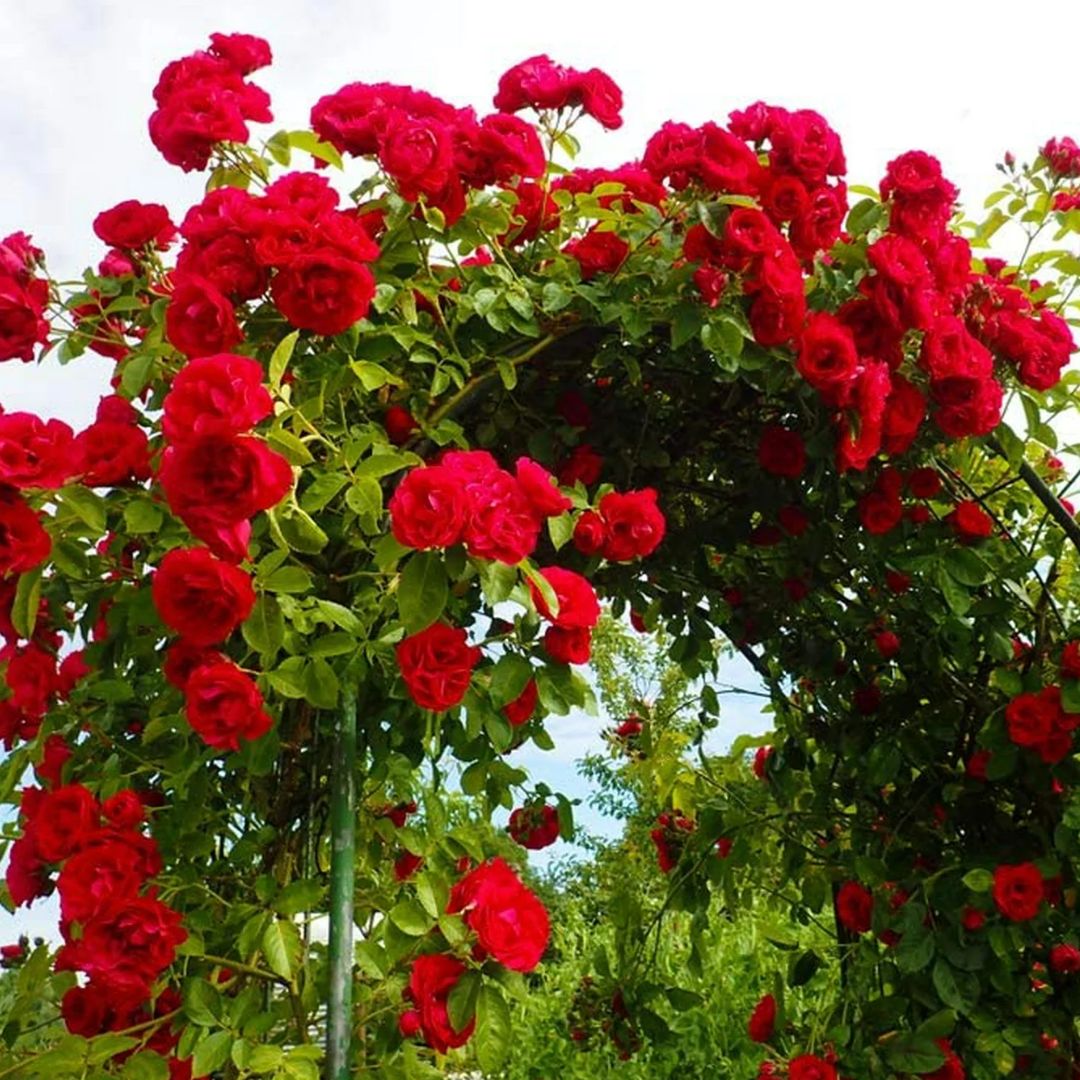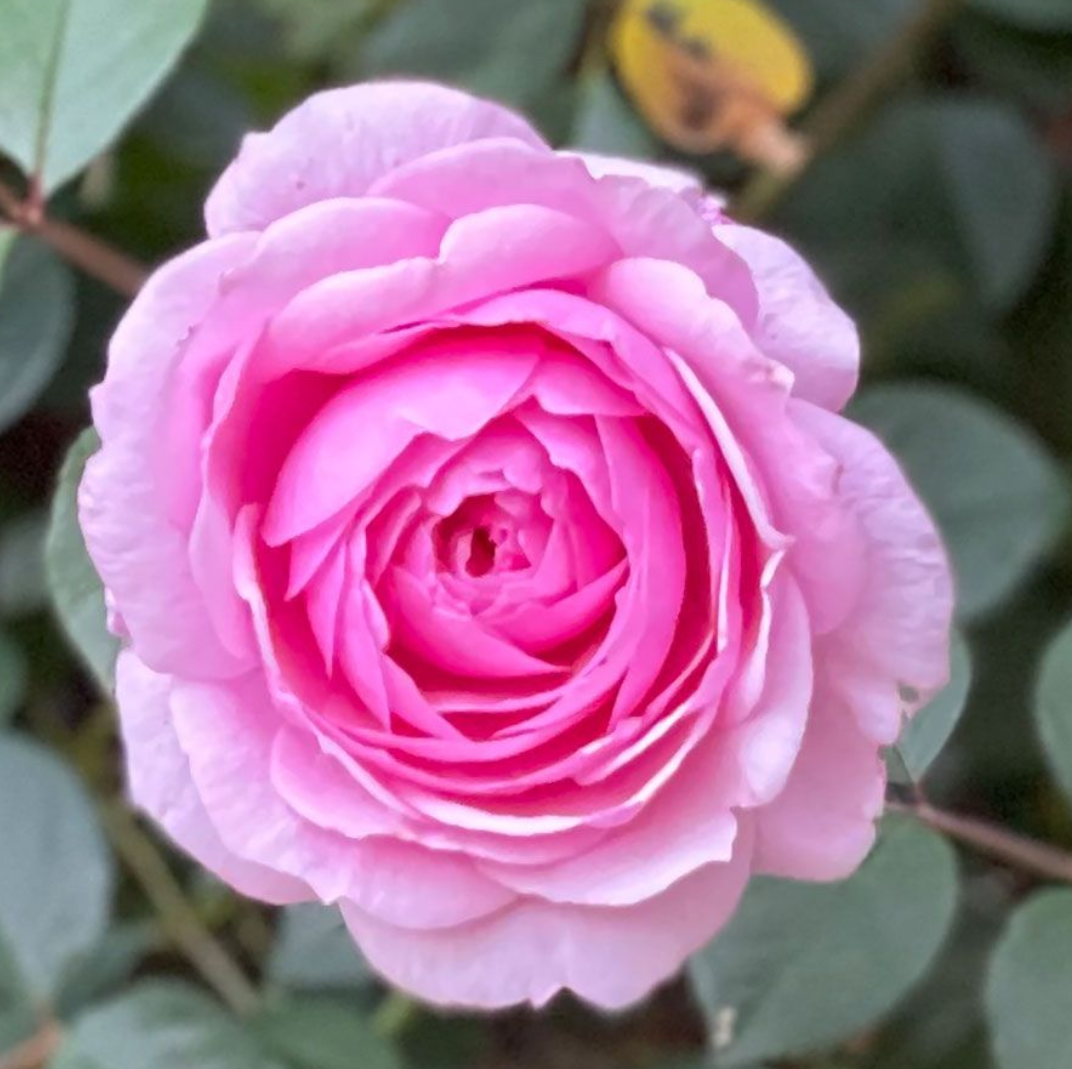How to Plant and Grow Climbing Roses for Pretty Privacy — It's Time to Add Fragrance and Foliage to Your Plain Fence
Privacy doesn't need to be boring, you can add a burst of color to brighten your backyard while also creating a space where you can retreat to without prying eyes


Pretty privacy is the way to go when it comes to keeping those nosey neighbors away. A bloom that has become quite popular to do just that, is the ever so fragrant and elegant climbing rose. With many varieties to choose from, these blossoms are sure to add foliage and grace to even the plainest fence.
The best plants to cover a fence are those that can grant style and seclusion in one. Wes Harvell, a Rosarian and Horticulturalist from Jackson & Perkins tells me: "Climbing roses are a perfect addition to any garden, providing vertical interest and beautiful blooms. They are not true vines, but they have long canes that can be trained to grow along trellises, fences, or arbors".
If you're looking to spruce up your privacy fence, climbing roses may just be the perfect touch. Here's everything you need to know about planting and growing these precious flowers — according to an expert.
Climbing Roses
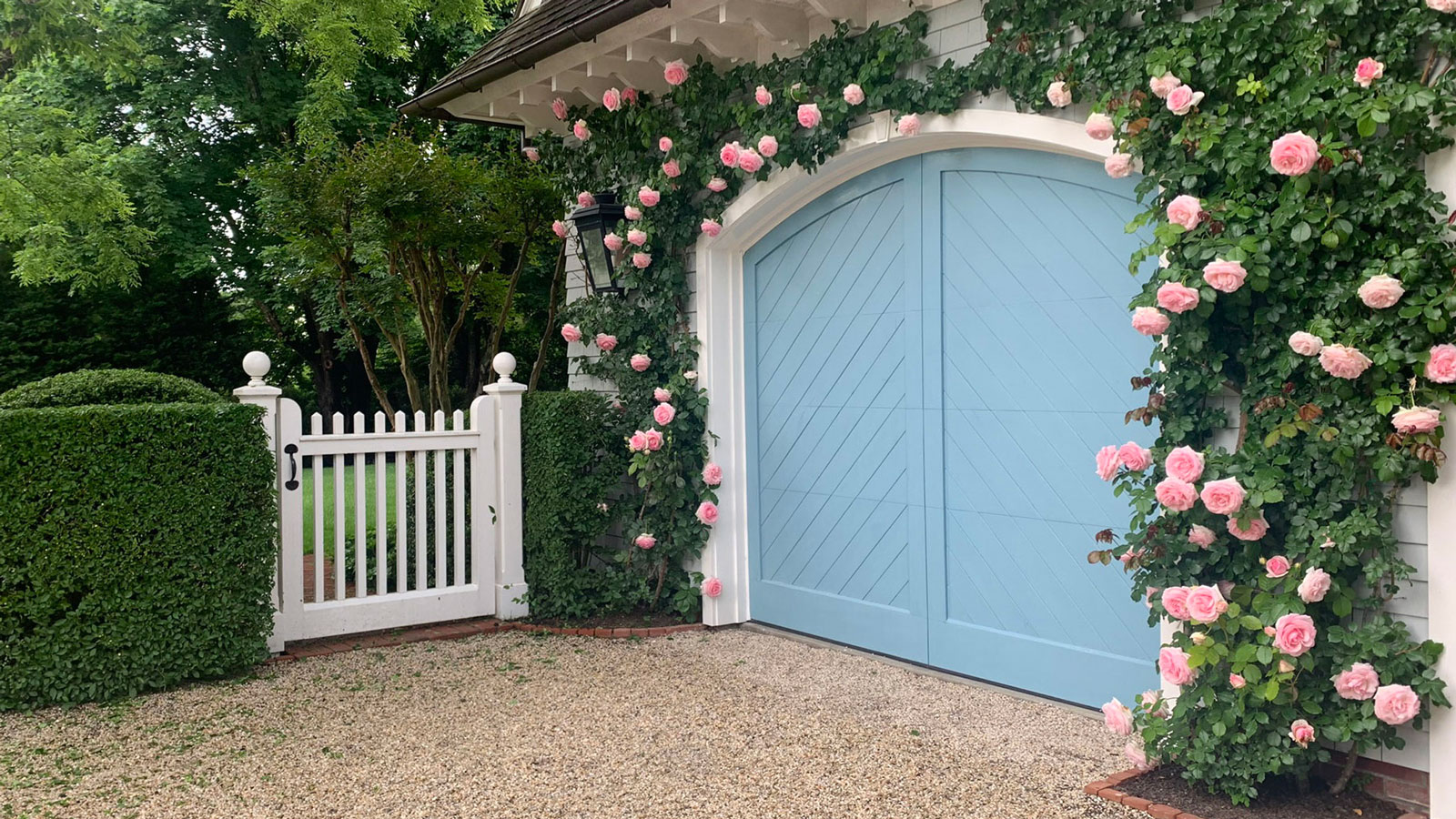
Whether you're looking for climbing plants for the front of your house or your backyard, choosing the right blooms to match the exterior of your home is key. Climbing roses are some of my favorite flowers and best all of, these come in a range of stunning colors.
"Climbing roses can be vigorous growers and, with proper care, will produce an abundance of flowers," says Wes Harvell, a Rosarian and Horticulturalist from Jackson & Perkins. "They require a sturdy support structure and regular training to encourage growth in the desired direction".
Here's everything you need to know about climbing roses.
How to Plant Climbing Roses

There are many easy hacks to make your roses look better — the first being, adding it onto a plain and tiresome fence that needs a bit of color. But how exactly do you plant climbing roses and what would be the best way to do it?
The Horticulturalist, says you should follow these six planting steps in order to get the best out of your blooms:
The Livingetc newsletters are your inside source for what’s shaping interiors now - and what’s next. Discover trend forecasts, smart style ideas, and curated shopping inspiration that brings design to life. Subscribe today and stay ahead of the curve.
Step 1: Prepare the area - Wes says you first need to "select a sunny location with well-draining soil and ensure the support structure is in place".
Step 2: It's time to dig a hole - Next up, "dig a hole twice as wide and as deep as the root ball of the rose".
Step 3: Amend the soil - For this step Wes says you will need to mix compost or well-rotted manure into the soil to improve fertility and drainage.
Step 4: Prepare the rose - "If planting a bare-root rose, soak the roots in water for a few hours before planting and trim any damaged roots," Wes adds.
Step 5: Plant the rose - This step is the most crucial and for this Wes says you need to, "place the rose in the hole, making sure the graft union (the bulge where the rose was grafted onto the rootstock) is at or just above ground level. Then Fill the hole halfway with soil and water thoroughly to settle the soil". Ensure you completely fill the remaining hole with soil and water again.
Step 6: Mulch - Last but not least, apply a layer of mulch around the base to retain moisture and suppress weeds.

Horticulturally educated with over 30 years in the rose business as a salesman, merchandiser, marketer, and online retailer. Wes is currently the rosarian for the collection of JPPA Inc, garden brands, Jackson & Perkins, Wayside Gardens, and Park Seed.
How to Care for Climbing Roses

Now that you've planted your delightful climbing roses to revitalize your privacy fence ideas, what would be the best way to take care of these flowers? Wes says you need to keep an eye out for five main care tips — these are watering properly, fertilizing, pruning correctly, Mulching and keeping an eye out for pests of disease.
"Water deeply at the base of the plant, avoiding overhead watering to prevent disease. Roses need about 1-2 inches of water per week," Wes says. As for fertilizer, Wes tells us the best time to feed roses balanced rose fertilizer would be in the spring and mid-summer. For instance, you can use this Miracle-Gro Water Soluble Rose Plant Food from Amazon, priced at $8.28.
Next up, pruning. Firstly, ensure you have the right pruning tools to get the job done. As for when to prune, Wes notes: "Prune in late winter or early spring. Remove dead, damaged, or weak canes". You can then "train the main canes horizontally to encourage flowering along the length"
Don't forget to mulch your blooms, Wes explains that it is important to maintain a 2-3-inch layer of mulch to conserve moisture in your roses as well as remove any weeds that may pop up.
As a final care tip, the expert says you need to keep an eye out for pest and plant disease. "Monitor for pests such as aphids and diseases like black spot. Use appropriate treatments as needed," Wes adds.
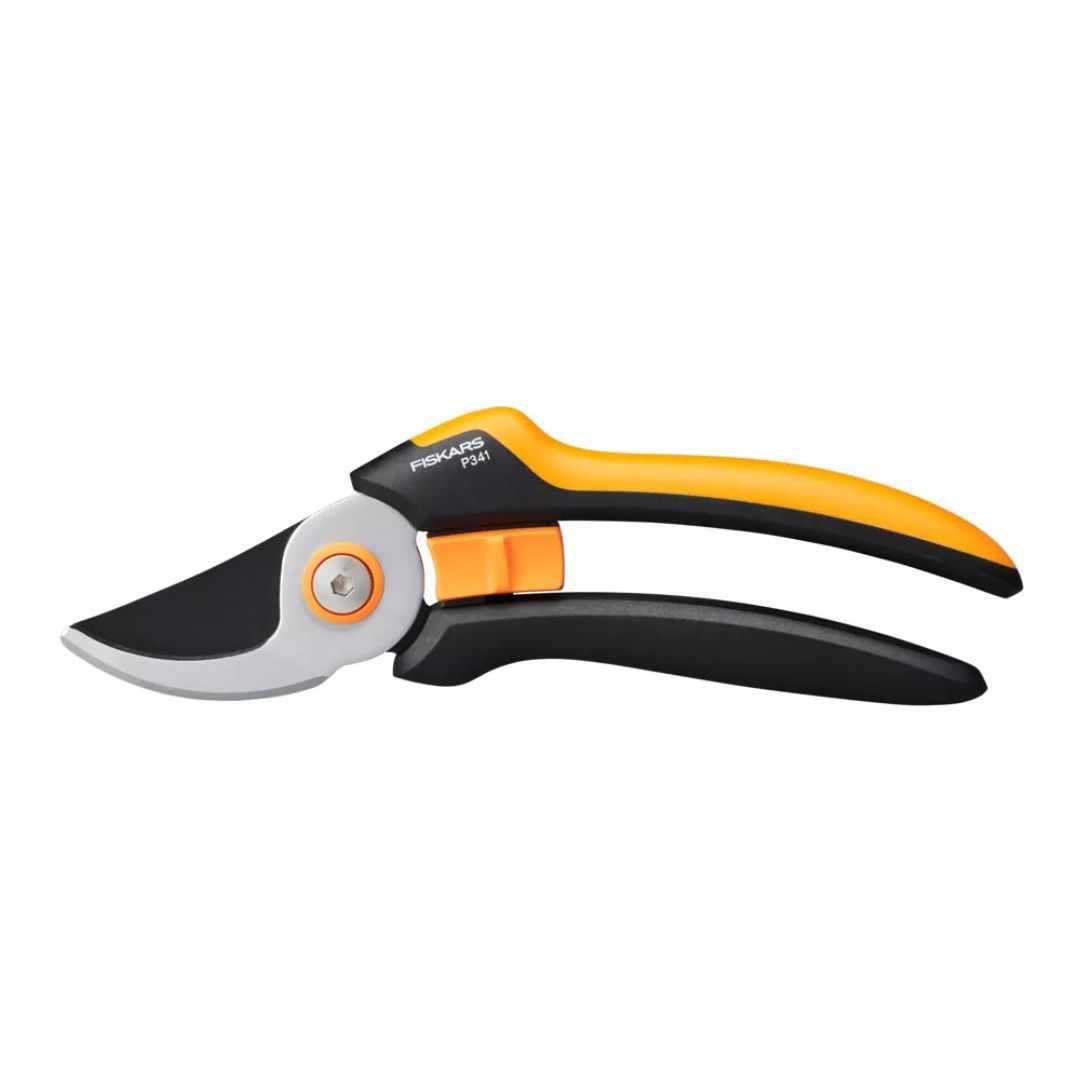
Price: $16.99
Size: 10.5" H
The best pruning tool for climbing roses are bypass pruners. This Fiskars P341 Bypass Pruner from Target is sturdy, easy to hold and comes with two sharp, steel blades — giving you precise cuts on stems and branches.
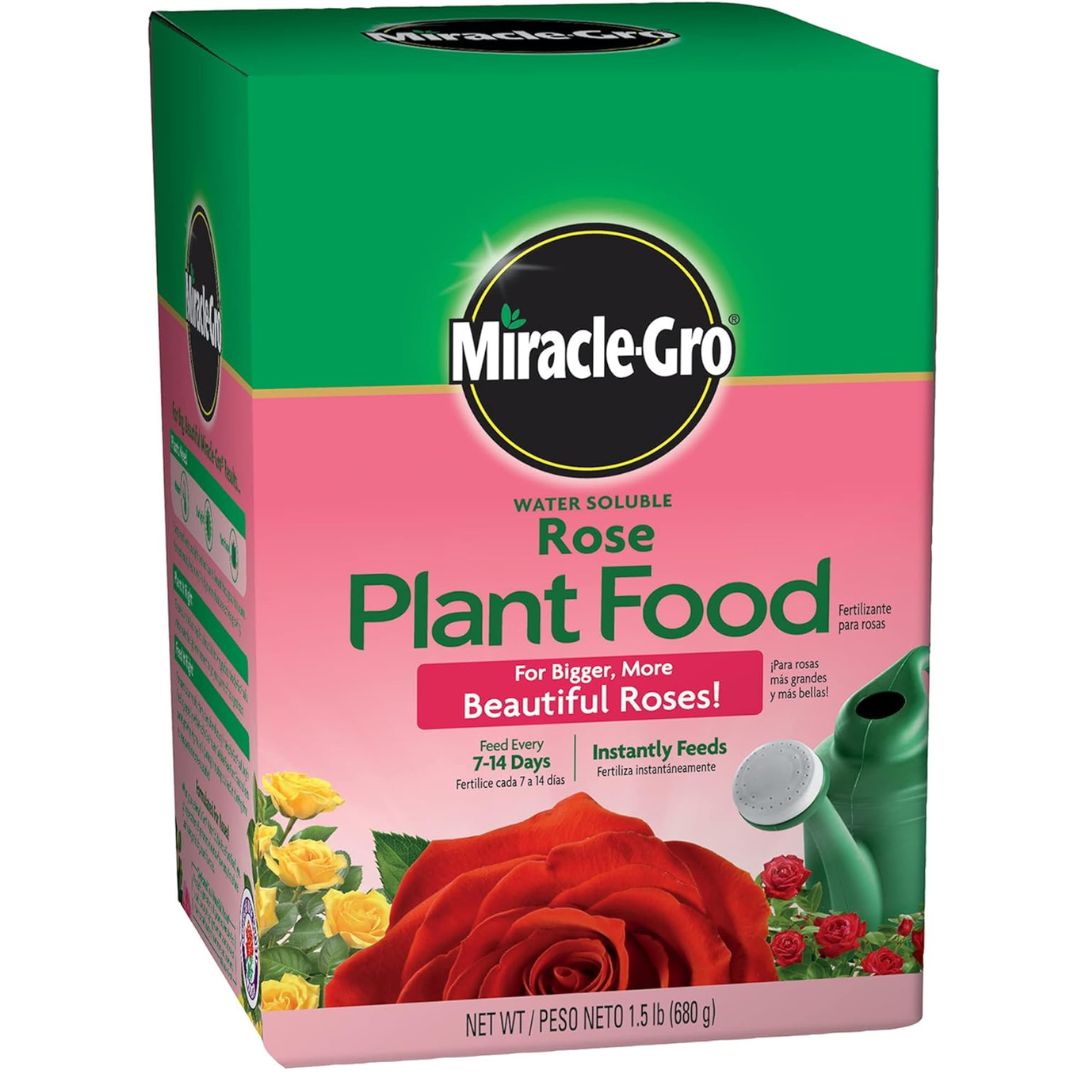
Price: $8.28
Was: $9.99
Size: 1.5lb
Fertilizing your garden and the blooms it holds is important. This rose plant food from Amazon promotes healthy blooms and lush foliage. For the best results, ensure you feed your blooms every 7 to 14 days.

Price: $8.99
Color: Natural brown
Mulching can be made easy with this SuperMoss Coco Mulch from Amazon. It can be purchases in a 8oz bag and aims to help your plants grow bigger and better. This product is stated to be long-lasting and easy to store.
Types of Climbing Roses
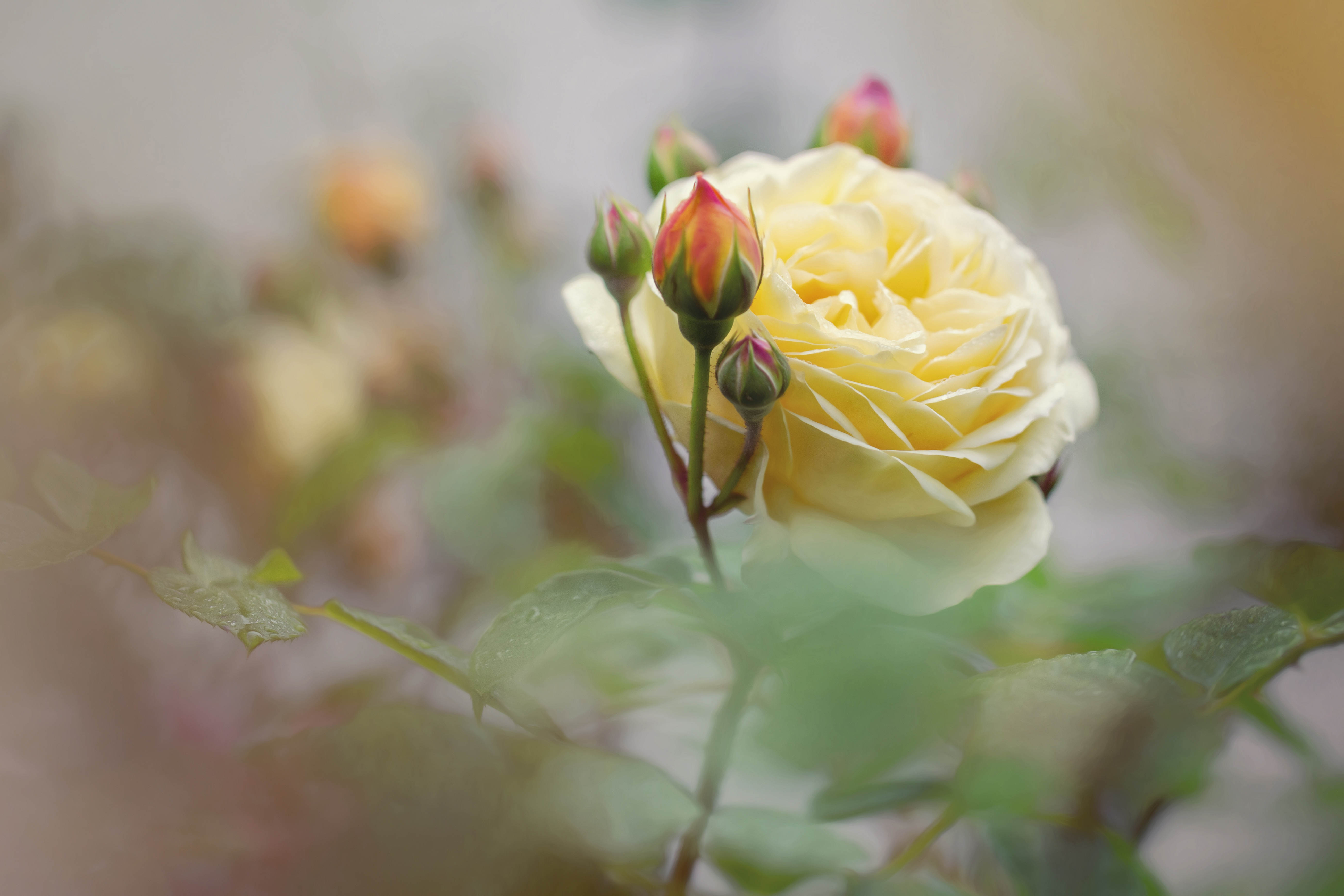
If you're looking for unexpected ways to add color to your backyard, climbing roses are the way to go. These flowers come in a range of different colors, shades and sizes — and will certainly elevate the look and feel of your space.
I asked the Rosarian and Horticulturalist to name some of his favorite climbing rose varieties."Two of my favorite climbing roses are Oxford Girl and Big Ben," Wes says. "Oxford Girl is one of my favorites because it is a real standout in the garden. It's a vigorous climber with arching canes that can easily reach 10 feet tall and spread 4 feet wide". The 3-inch double flowers have between 26 to 40 pink petals and carry a strong, sweet fragrance, according to the expert. This variety also "has excellent disease resistance, making it a perfect choice for new rose gardeners."
"Big Ben is another one of my favorites," Wes explains. "It is another fantastic climbing rose that quickly establishes itself and fills the garden with a delightful fragrance. Big Ben grows vigorously with strong, arching canes that reach 8 to 10 feet tall. It produces clusters of 3 to 7 tight buds that open into 3- to 4-inch double blooms with 17 to 25 petals in a beautiful mix of white, cream, and yellow hues". This variety carries a strong, sweet fragrance and can grow rapidly throughout the season, from late spring to late fall.
"Big Ben is highly versatile, with strong, healthy, and disease-resistant foliage that's dark green and glossy. You can grow it on trellises, poles, arches, and pillars, train it along fences or walls, or let it fountain on its own. It's a fantastic choice for adding elegance and fragrance to your garden," Wes adds.
What are the Common Problems with Climbing Roses?

Your modern garden and the plants it holds can go through a few difficult moments. "Growing climbing roses is a highly rewarding experience, and with a little care and attention, any challenges that arise can be easily managed," says Wes.
So what problems occur with these blooms and what solutions are there to help your climbing roses grow to its full potential?
Pests such as aphids, spider mites, and rose slugs are common pests can affect your climbing roses. Wes says a solution for this would be to "regularly inspect your roses for signs of pests". You can also use insecticidal soap or neem oil as needed to prevent these pesky pests from making their way onto your plant. "Beneficial garden insects such as ladybugs and lacewings can help keep pest populations under control," the expert adds.
Another common problem is plant disease. "Black spot, rust, and powdery mildew are common fungal diseases that affect roses," Wes explains. To avoid this "water at the base of the plant to avoid wetting the foliage, prune to improve air circulation, and remove any infected leaves or stems. Applying a fungicide when symptoms first appear can also be beneficial".
If you've planted your blooms, but you've not been giving them enough sunlight, pruning and care, Wes says it can lead to poor flowering. He recommends "your climbing roses get at least 6 hours of sunlight daily. Prune correctly by removing dead wood and cutting back canes to promote new growth. You can also use a balanced fertilizer in the spring and during the growing season".
FAQS
Where should I plant climbing roses?
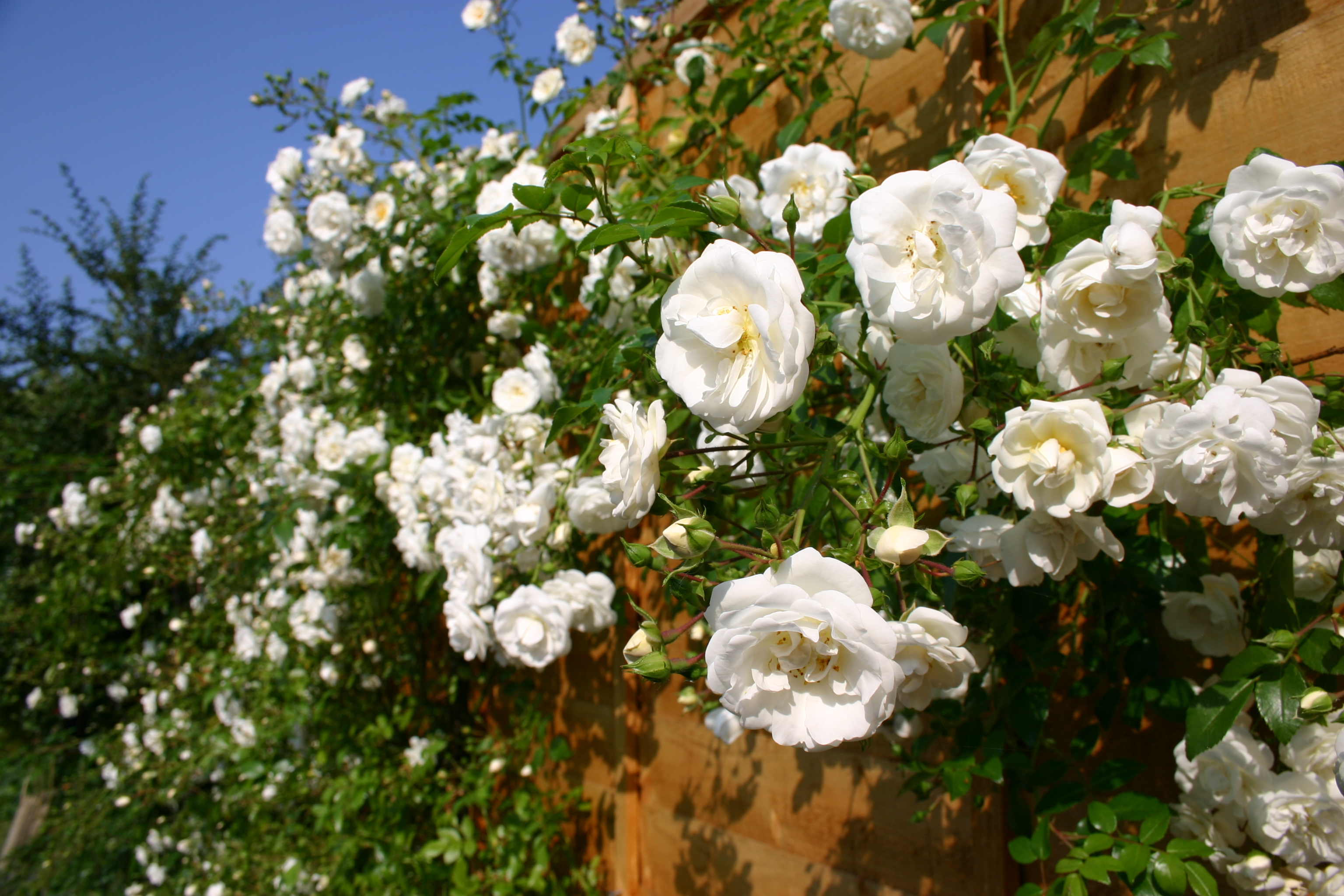
The best plants for privacy are those that are tended to correctly. In order to understand your plant and its need, you'll first need to establish where it can be planted. Does it like sun or shade and how much sunlight does it need?
For climbing roses, Wes says it is important to "choose a location that receives at least 6 hours of sunlight per day. Morning sun is best as it helps dry dew and prevents fungal diseases. Plant in well-draining soil — climbing roses prefer well-draining soil, slightly acidic to neutral (pH 6.0-7.0). Ensure there's enough space for the rose to spread out".
"Take into account the mature size of the rose when choosing the planting site. Plant near a sturdy support structure such as a trellis, fence, or arbor to support climbing canes," Wes adds.
Garden fencing ideas just got a little more exciting with climbing roses. These blooms are truly a touch of elegance and grace — and they certainty know how to make an impression.
If you're looking to add these flowers onto your privacy fences, be sure to follow the planting and care steps above.
Happy planting!

Faiza is the Renovation Editor at Livingetc. She previously worked for The Independent as a News Feature Writer, where she crafted lifestyle, entertainment, and news stories. She also worked as an Audience Editor for the newspaper for almost two years. Thriving in the busy newsroom, Faiza also spent her time crafting stories for Sky News as an SEO reporter, where she produced stories based on trending topics. Lifestyle and interior design have been areas of interest for her for some time, and as she advances in this field, she will continue to refine her skills in all aspects of design. Faiza has a background in SEO, social media, and reporting. Her passion for writing goes beyond her work as she loves all things poetry and creative writing.
